![]()
By Gypsy Blue Rose

HAIKU is a Japanese short unrhymed poem that uses imagistic language to express the essence of a deeply felt moment in time. It resonates on a deeper level, enlightening the reader and making an insightful connection
HAIKU was created in Japan in the thirteenth century. It was the opening phrase of a long poetic form called RENGA. The much shorter haiku broke away from renga in the sixteenth century and was mastered a century later by Matsuo Basho. He was a Zen monk and poet of the Edo period ( between 1603 and 1868 ) in Japan. He is recognized as the greatest haiku master. His ancient “Pond and Frog” haiku is considered one of the best haiku in Japanese history. Keep in mind that many Japanese haiku translated to English lose meaning in translation. Notice the same ‘frog in the pond poem’ haiku in Japanese and English have different syllables count.
JAPANESE VERSION
Furu ike ya ( 5 syllables )
kawazu tobikomu ( 7 syllables )
mizu no oto ( 5 syllables )
ENGLISH TRANSLATION
old pond… ( 2 syllables )
a frog jumps in ( 4 syllables )
water's sound ( 3 syllables
CONFUSING A 5/7/5 POEM FOR A HAIKU
I get a lot of questions about haiku in fanstory, one of them is “What is the difference between a 5/7/5 poem and a haiku?”. The simple answer is that a 5/7/5 poem's rules are simple, use 17 syllables in a 5/7/5 format. I add that if the lines are grammatically connected the poem flows better, otherwise it sounds like a list or a telegram.
5/7/5 Poem example:
My dear Aunt Minnie
loves to bake banana pies
for her family
Haiku example:
from the porch
contemplating the harvest moon —
wisdom quest
The 5/7/5 POEM example is not a haiku, because it’s simply a paragraph divided in three lines. It doesn’t have the two essential parts of haiku: a KIGO and a SATORI. KIGO is word or phrase associated with a particular season (spring, summer, autumn, or winter). SATORI is a phrase (usually last line) that provides understanding. It refers to a deep experience of one's essence of true nature. It’s commonly translated as enlightenment.
The HAIKU example is a haiku because it follows the haiku rules.
— The first two lines describe a moment in nature using imagistic words. Imagistic words are expressions of ideas and emotions through clear precise images. Almost all Japanese poetry use imagism. It’s a very visual art form, and the reason I like it so much.
— In the haiku example above, the harvest moon is the season word (kigo) for autumn.
— It’s written in 17 syllables OR LESS because English and Japanese languages are different. See the example below.
— Haiku are succinct poems so you never use more words than you need but make sense. For example: cold winter day (winter is always cold); summer hot weather ( most summer days are hot); cold snow (snow is always cold).
— At the end of the second line, the haiku has a dash to pause before reading the third line (satori). It makes the reader ponder about life as a wisdom quest.
— It never rhymes, usually avoid poetic devices, such as alliteration, personification, metaphor.
— Avoid punctuation or capital letters except for proper names and the dash before the satori.
— Write in present tense verbs.
— The poet is the observer and usually doesn’t use the first person pronoun ( I, me, we, us, mine, ours, myself, and ourselves ).
HAIKU reached the West in 1868. A group of English and American poets who called themselves IMAGISTS took a special interest in haiku. Imagism was a movement in early-20th-century Anglo-American poetry that favored precision of imagery and clear, sharp language.
Zen influenced haiku for its personal tranquility, and its encouragement of education and art. As a result, the haiku translations of scholars H.G. Henderson (1934-1958) and R.H. Blyth (1949) began to promote Haiku in the United States.
During the 1970s and 1980s, English-language haiku became more entrenched in North American culture with over a dozen periodicals: Haiku Poets of Northern California, Haiku North America, and Haiku Society of America, to name a few.
I hope you find this lesson helpful. I love Haiku. Feel free to ask me any questions.
Thank you
| Author Notes |
HELPFUL INTERNET SITES
click here to read haiku examples *** click here to read haiku rules *** click here to read why is 5/7/5 OR LESS rule *** click here for season words -------------------------------------------------------------------- click here to check Haiku Society of America *** Haiku Poets of Northern California *** Haiku Poets of Northern California *** American Haiku I hope you find the lesson helpful. Feel free to contact me if you have any questions, I love to help. Thank you for reading my lesson. |
![]()
By Gypsy Blue Rose

I gave birth to a beautiful girl at 17 years old. It was unplanned and my family wanted me to have an abortion but it was my body and my choice. Mom died when I was 10 years old and my dad left me at 15 years old so I didn’t have a parental role model, but a maternal instinct took over.
I bought an excellent parenting book by Dr. Spock, “Baby and Child Care”. I followed chapter after chapter, faithfully.
Since then, I had two more children. They are my treasure. Motherhood is the best decision I ever made.
| Author Notes |
100 words non-fiction
I didn't want an abortion but I am pro-choice. Women have the right to decide what is best for them. For me, I wanted to have my baby. Thank you very much for reading my story. Gypsy |
![]()
By Gypsy Blue Rose

Dear God,
Thank you for all the times you have been there for me. Such as the times I have drowned in all-encompassing darkness and pain, you were the only one by my side. Please, God, continue to be with me.
I know I should have died many times but here I am. Perhaps I had important work to do, like helping to raise my grandson. Please, God, keep me mentally and emotionally balanced so I can be the best grandmother and mother I can be.
I appreciate the chances you give me each day to make amendments to my children for all the times I was too deep in my bipolar disease to realize the way my actions affected them. I can’t undo the past but thanks to you, every second is a new beginning. I know that staying in the present moment and turning my will and life over to your care is the answer to a better life.
I am grateful for your guidance in navigating my life. Left alone to my own devices, sometimes, I make bad choices. Please help me make better choices
Thank you for loving me. I know that I am your precious child. This thought always makes me cry. I don’t have anybody else that loves me so deeply and constantly.
Always Yours,
MariVal
| Author Notes |
Non-fiction letter to God for the contest. I always appreciate kind constructive criticism.
MariVal aka Gypsy picture from my pinterest account |
![]()
By Gypsy Blue Rose

After my mom died, my relationship with my dad deteriorated. He was not a good single father, and after five years, he married a horrible woman. She didn’t want my siblings and me so she kicked us out of her house. My dad went along with her decision. I realized he was a coward.
I lived in Spain when jobs were hard to find. At 15 years old, I was homeless and without an income. But thank God my mother’s sister offered to take me in. She paid for my ticket to America and took care of me until I was able to live on my own. My sister was 25 years old and decided to stay in Spain. My brother was only 10 years old and it was illegal to kick him out until he turned 18 years old.
dark shadows
over withered flowers —
vase full of pain
My relationship with my dad was not always bad. When I was little, he was my idol. He was handsome, smart, strong, and so much more.
Dad taught me to ride a bike, I still remember the way the air on my face felt and how excited I was when he let go. Before he taught me to swim, I held on to his feet as he floated around the swimming pool, it was so much fun! At weddings, I would step on the tip of his shoes and we danced. I loved dancing with my dad, I felt so grown up. I remember him brushing my tangled hair, it hurt and mom did it much better, but I didn’t complain because he was trying. On the weekends he took us on long car rides around Madrid and the cities closeby.
At the beginning I was mad at him, but after a few years I forgave him. I chose to have peace of mind. I never stopped loving him.
eastern winds sweep
dead leaves off her driveway —
as she picks ripe apples
| Author Notes |
I welcome constructive criticism
Withered flowers, in Japanese folklore, are seen as a symbol of sadness, despair, and unrequited love. A reviewer asked me to write more about my life so I added some of it. My Dad and Mom passed away a long time ago. I have three children and three grandchildren. They are my treasure, the best thing of my life. I would never give up my children for a man. I have a bachelor's degree in business administration. I worked in the social field and teaching most of my life and I loved it. , I have a bipolar disorder, but with medication I live a normal life. I am divorced but I like being single, I don't need a man to complete me. I am a poet and artist. I love writing Japanese poetry and stories. For me, poems are easy to write but I need to practice my prose. I would like to write the story of my life. I'm at peace and happy. I love Fanstory, I have learned a lot and made wonderful friends. I had a challenging life but I wouldn't change anything because it made me who I am today. I'm not perfect but I'm whole. Haibun is richly varied, in matter and technique. It's a vast genre and only marginally explored by foreigners. Most westeners are not familiar with classic haibun. Haibun can be written in present or past tense. It can be a couple of sentences with one haiku, to long journals with intermitent haiku added at the end of each complete scene. Japanese poet, Master Matsuo Basho, made haiku and haibun popular in the 17th century. He traveled most of his adult life and wrote haiku and haibun all throughout his journey. Japanese people consider his haibun, "The Narrow Road to the Deep North", the best in their history. It was a travel journal with long entries and haiku in between each section. Haibun is a poetry form that combines haiku with prose. Guidelines: TENSE: present or past SUBJECT MATTER: autobiographical, travel journal, slice of life, memory, dream short sketch of a person, place, and event. TOPICS: life as a journey, love affairs, illness, human concerns & experiences POINT OF VIEW: first person (everything seen through the author's eyes), third person (he/she) SENSORY: uses imagery, sensory, concrete details, no abstractions LENGTH: varies from very brief (1-2 sentences) with one haiku, to long journals with interspersed haiku, to memoir-length works Styles Haiku/prose Prose/haiku Haiku/prose/haiku, Prose/haiku/prose/haiku/prose/haiku etc. PROSE tells the story, gives information, defines the theme, creates a mood through tone, provides a background to spotlight the haiku HAIKU: moves the story forward, takes the narrative in another direction, adds insight or another dimension to the prose, resolves the conflict in an unpredictable way, or questions the resolution of the prose. Prose is the narrative and haiku is the revelation or the reaction. Guidelines for Writing Haibun in English by Margaret Chula click here to read guidelines for writing haibun for Haibun Today examples and more information click here for wikipedia definition click here for Graceguts- more information click here Thank you very much for reading and reviewing my poem, Gypsy pictures from Pinterest account. I have the copyright to presentations and writing; they are also registered in Fanstory |
![]()
By Gypsy Blue Rose

I wear the short black dress he loves and my hair cascades down my bare back. The honeysuckle breeze squeezes between the blinds. The anticipation of his arms around me pressing his body against mine makes me quiver inside. Yearning rushes through my veins and my skin is ablaze.
A knock and I rush to the door. His hungry eyes catch a flicker of longing in mine. I close the door leaving the world outside.
| Author Notes |
75 words
Thank you for reading and reviewing my flash fiction story. Gypsy |
![]()
By Gypsy Blue Rose
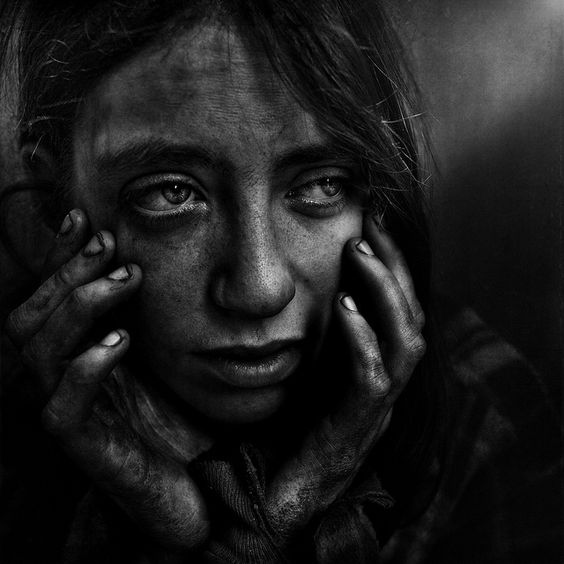
| Author Note: | FICTIONAL |
~ f i c t i o n a l ~
I lost my job and couldn’t afford rent or food. Eventually, I became homeless. I remember walking by them thinking “they” were lazy alcoholics who chose to live in the streets.
Living on skid row was extremely dangerous. I was raped and beaten regularly. I turned to drugs and alcohol to numb myself from my horrible existence.
I joined an AA group. At first, for the coffee and cookies but soon it became my salvation and a way out of hell.
| Author Notes |
80 words - it's a fictional short story but is a real problem in our country.
skid row = a poor district of a city where there are inexpensive hotels, bars, etc., and where people who are homeless usually go. In January 2023, The Department of Housing and Urban Development (HUD) counted 653,104 homeless Americans, 35,574 are Veterans, and 437,580 have some mental illness. You would be surprised to know how many regular middle-class folks are one paycheck away from homelessness. I worked as a social worker for homeless people for 3 years and realized many are regular people like you and me. Not all homeless people are drunks or lazy and they all deserve respect and kindness, they are free and they have a huge impact. Thank you very much for reading my flash fiction for the contest. |
![]()
By Gypsy Blue Rose

| Author Notes |
Sexy Sadie and Revolution 9 are songs by the Beatles. In Revolution 9, there is a phrase: number 9, number 9, number 9
Haibun is a Japanese poetic form that combines haiku with prose. It's in present or past tense. The subject matter can be autobiographical, a travel journal, a slice of life, a memory, a dream, or a short sketch of a person, place, or event. Topics can be about life, love affairs, human concerns, and experiences. The point of view is first person (the author's eyes), or third person (he/she). Use imagery, sensory, and concrete details. Length varies from very brief (1-2 sentences) with one haiku, to long prose entries with interspersed haiku. The prose tells the story, gives information, defines the theme, creates a mood through tone, provides a background to spotlight the haiku The haiku moves the story forward, takes the narrative in another direction, adds insight or another dimension to the prose, resolves the conflict in an unpredictable way, or questions the resolution of the prose. Prose is the narrative and haiku is the revelation or the reaction. click here to read guidelines for writing haibun for Haibun Today examples and more information click here for Wikipedia definition click here for Graceguts- more information click here click here for a pdf file of guidelines Thank you very much for reading and reviewing my poem, Gypsy pictures from my Pinterest account Gypsy Blue Rose copywrites for poems and presentations, and they are registered with FanStory. |
![]()
By Gypsy Blue Rose

With a heavy heart, she cuddles with blue dusk to pacify her woven warp-and-weft woes. At dawn’s light, she’s carried away by her wistful longing. The pain and grief reflect on her blue eyes, they are the window to her soul.
interred in night’s grave,
she’s veiled with black lace
and wooed by howling wind
| Author Notes |
- in Spain, when a loved one dies, women wear black to express their grief. At church, they wear black lace veils to cover their head. In general, women wear veils on their heads at church. All these were customs when I was a little girl, it may have changed.
- Interred: to deposit (a dead body) in the earth Haibun is a Japanese poetic form that combines haiku with prose. It's in present or past tense. The subject matter can be autobiographical, a travel journal, a slice of life, a memory, a dream, or a short sketch of a person, place, or event. Topics can be about life, love affairs, human concerns, and experiences. The point of view is first person (the author's eyes), or third person (he/she). Use imagery, sensory, and concrete details. Length varies from very brief (1-2 sentences) with one haiku, to long prose entries with interspersed haiku. The prose tells the story, gives information, defines the theme, creates a mood through tone, provides a background to spotlight the haiku The haiku moves the story forward, takes the narrative in another direction, adds insight or another dimension to the prose, resolves the conflict in an unpredictable way, or questions the resolution of the prose. Prose is the narrative and haiku is the revelation or the reaction. click here to read guidelines for writing haibun for Haibun Today examples and more information click here for Wikipedia definition click here for Graceguts- more information click here click here for a pdf file of guidelines Thank you very much for reading and reviewing my poem, Gypsy Pictures from my Pinterest account. Poem and presentation by Gypsy Blue Rose COPYWRITE@2024 |
![]()
By Gypsy Blue Rose

Bad jokes and dread are written in Arthur's journal. His only friend was an underpaid and overworked therapist. The government canceled his pills and mental health care. Life was an uphill stairs leading to nowhere.
garbage men on strike,
putrid city drowns in chaos
and angry mobs
Being a good boy never helped. He took care of his invalid mother night and day putting up with her delusional nonsense. Until Arthur found out that when he was a defenseless little boy, she tied him to the radiator for most of the day and night. His mom's boyfriends raped him again and again. Depression turned into rage and he smothered his mother to death, surrendering to his dark side~ The Joker.
house full of empty bottles
dirty dishes
and negligence
| Author Notes |
The Joker is a Comic Book character. It has been adapted to the movie screen several times. My favorite is the latest one with Joaquin Phoenix. for more information click here
Haibun is a Japanese poetic form that combines haiku with prose. It's in present or past tense. The subject matter can be autobiographical, a travel journal, a slice of life, a memory, a dream, or a short sketch of a person, place, or event. Topics can be about life, love affairs, human concerns, and experiences. The point of view is first person (the author's eyes), or third person (he/she). Use imagery, sensory, and concrete details. Length varies from very brief (1-2 sentences) with one haiku, to long prose entries with interspersed haiku. The prose tells the story, gives information, defines the theme, creates a mood through tone, provides a background to spotlight the haiku The haiku moves the story forward, takes the narrative in another direction, adds insight or another dimension to the prose, resolves the conflict in an unpredictable way, or questions the resolution of the prose. Prose is the narrative and haiku is the revelation or the reaction. click here to read guidelines for writing haibun for Haibun examples and more information click here for Wikipedia definition click here for more info click here Thank you very much for reading and reviewing my poem, Gypsy Pictures from my Pinterest account. Poem and presentation by Gypsy Blue Rose COPYWRITE@2024 |
![]()
By Gypsy Blue Rose

| Author Note: | for Dean Kuch |

♦
Life without him was not worth living. After he left me, the house was eerily silent. Loneliness echoed in the empty halls. The last thing I remembered was the paramedics forcing me to vomit and taking me to the emergency hospital. I was terrified and kept asking them, “Am I going to die?” one of the EMTs told me, “You are stable now. We’ll be at the hospital soon and the doctors will talk to you”.
♦
After the Emergency Hospital, I was transported to the Nevada City Mental Hospital for a 5150 - 72-hour hold. It was not the first trip to the hospital. Suffering from chronic depression was hard. I couldn’t deal with change and the stressful end of relationships.
♦
On the long ride to the hospital, I looked outside the window at the trees passing by. Where was I? I realized I was leaving my children’s homes far behind and felt utterly alone.
♦
The paramedic was a joker. He kept telling me stupid jokes to cheer me up but I must have looked sad and at the end of the ride, he held my hand and seriously told me, “You are going to be alright.” It was a genuine act of kindness.
♦
The hospital was a gloomy sterile place, like the ones before. I felt apathetic and deeply depressed. My children were tired of all my suicide attempts and they had reached the end, this time was the last straw. They refused to come and visit or offer me help. I didn’t have a job or home so my future was bleak.
♦
All I could do was lie in bed or sit alone in the community/dining hall. I cried inconsolably all the time. I dreaded going to bed because I suffered from insomnia.
♦
The first day I was alone in the bedroom but on the second day, a patient joined me in the middle of the night. At 3:30 am, we had a clock on the wall, I felt her sitting on my bed and smelled her rotten breath. I was afraid to open my eyes. I hoped she would return to her bed, but she didn’t.
♦
“Get ready”, she said, "the Grim Reaper is coming tonight to take us away.” I opened my eyes and I will never forget what I saw. Her eyes looked dead, like a shark’s eyes. Her skin was dark gray and her hair was a few greasy strands on her bald head. The worst thing was to feel her cold and clammy hands on mine. She was dead! Or so it seemed. I told myself it was an irrational thought and I should pinch myself to wake up, but nope! She was still there.
♦
“The beyond awaits and we can’t be late, ‘they’ wouldn't like it.” Her eyes were unnaturally wide-open and seemed ready to fall.
♦
“Don’t be afraid,” she said. “Demons won’t hurt you, at least not in the beginning. You will have a chance to make your case to Beelzebub, The Prince of Darkness.” I could not believe what I was hearing or seeing. This crazy woman looked like something out of a horror movie. Her clothes, if you can call them that; were torn, wet, and muddy … like she just got out of a swamp. Her smell was rotten. When I was little a dying dog had crawled under our house and it took us a long time to find him. The smell of death was horrible, like nothing I had smelled before. She smelled like that.
♦
“Hold on to my hand and stay close to me, you don’t want to get lost in the afterlife.” She said with a horrible whisper that made my skin crawl. After that, I passed out.
♦
I woke up at noon when the orderly came by. “Wake up, Mrs. Brenner, you missed breakfast and if you don’t hurry you will miss lunch.”
♦
I felt relieved and almost happy to realize it had been a horrible nightmare. The next bed was clean and made. Thank God!
♦
But when I looked down, I saw a slimy handprint on my arm and muddy footprints from her bed to mine.
♦
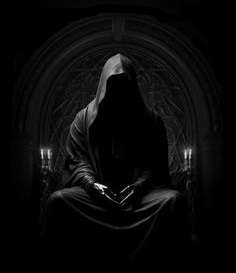
| Author Notes |
The painting is, 'The Nightmare' - by Henry Fuseli, 17th century
5150 - Emergency Hold (72 Hours) The 5150 hold, also known as the 72-hour hold, is a critical intervention used to detain individuals with mental disorders, who are considered a danger to themselves or others. The protagonist's name = Mrs. Lydia Brenner, comes from the main character in 'The Birds'. A 1963 horror movie produced and directed by Alfred Hitchcock. (no relation to my story, I just used her name). Emergency Medical Technician (EMT) Thank you for taking the time to read my little workshop of horror club entry. Gypsy |
![]()
By Gypsy Blue Rose
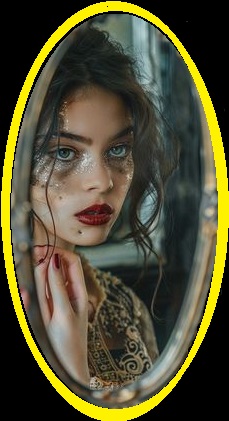

| Author Notes |
Body dysmorphia is when people have a very negative view of an aspect of their appearance (not limited to weight or size) that is not supported by objective evidence - according to the APA Dictionary of Psychology.
Bulimia and Anorexia are serious eating disorders that can cause all kinds of health problems in some cases death. 9% of the US population, or 28.8 million Americans will have an eating disorder in their lifetime. Eating disorders impact people of all genders, ages, races, religions, ethnicities, sexual orientations, body shapes and weights Many of us suspect that the beautiful, often highly edited images of people we see on social media make us feel worse about our bodies. - This week in the Finding Your Muse Club, we are learning Free Writing skills. If you are interested in joining the club give it a try. Everyone is welcome. click here if you want to check out the club Thank you for reading and reviewing, Gypsy |
![]()
By Gypsy Blue Rose

| Author Note: | My deepest thanks to Patrick Bernardy for his help |
Running With Wolves was the Brave Crow Chief’s daughter. She was a fierce woman warrior born of a long Mohican Chiefs bloodline. None of the male warriors came close to her hunting skills and bravery. Her father expected her to be the tribe’s chief after he died. He prepared her for the demanding and challenging position since she was a little girl but it was easy because she was a natural-born leader, fearless and wise for her age.
Running With Wolves loved to explore the land. Her favorite pastimes were hiking and climbing mountains … the higher the better. She was a skillful hunter who was well known for her stealthiness and archery skills. There was one mountain that most warriors avoided climbing. The elders in her village told scary tales about the cursed Midnight Mountain in the Raccoon Ridge. It was the highest one in their land.
She lived for overcoming challenges, and when she heard her tribe’s shaman's warnings against climbing Midnight Mountain, she made it her top priority. She thought it was going to be a worthwhile and exciting quest.
One of the elders' tales was about Mother Moon and her Children Clouds who lived at the mountain's peak. The truth was that the spirits were benevolent, and the curse was a myth meant to scare the tribe's children. Running With Wolves didn’t want to believe such stories, but the little girl in her was afraid. However, her father had taught her to overcome fears by facing them head-on.
The night was cool, and the sky was sprinkled with clouds. She felt blessed for all the gifts Mother Nature provided. The crickets and white owls serenaded her and she was content. Invigorated by the crisp air and fresh eucalyptus scent, Running With Wolves free-climbed the mountain with a well-paced speed.
As she reached the steep rocky peak of Midnight Mountain, she was engulfed with moist clouds and a shining full moon. She fell on her knees and prayed to the Great Spirit, Wauntht Mennitow, to help her climb down to a nearby place to wait for help. They found her in a cave unharmed with white, milky eyes.

| Author Notes |
This week's event for the Little Workshop of Horrors is a short story (300 words or more). The story has to use this phrase: "They found her in a cave unharmed with white, milky eyes".
Thanks to Patrick Bernardy for creating the event and leading our club this week. Thank you for reading and reviewing my story. Gypsy Pictures from my Pinterest account. Poems and presentations by Gypsy Blue Rose @copyright2024 Raccoon Ridge, officially named Mount Mohican, is a peak of the Kittatinny Mountains in Warren County, New Jersey. The mountain stands 1,580 feet above sea level. It lies along the Appalachian Trail in Worthington State Forest. Raccoon Ridge for mohicans history click here P''hanim wachpaschesak (woman warrior). Mohican mythological figures = Waunthut Mennitoow means "Great Spirit" in the Mohican language, and is the most common name used for the Creator (God.) |
![]()
By Gypsy Blue Rose
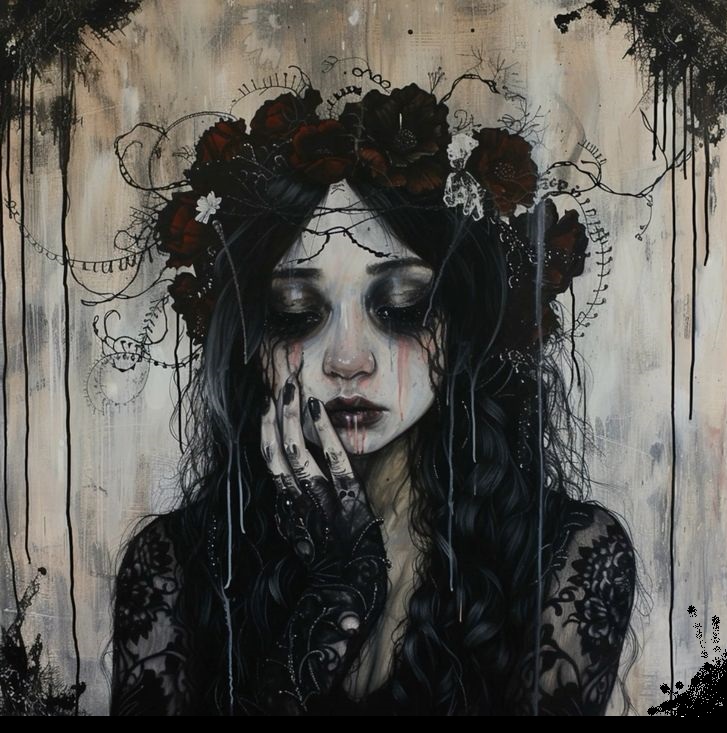

My Name is Weeping Willow and This is My Story
.
.
I hated moving to a new house. It was the seventh time since I was little. Adjusting to new places and people was extremely hard for me but this time was different. We were moving into an old mansion and I was intrigued. I thought about all the movies I've seen about old haunted homes. I loved horror books and horror movies. Stephen King was my favorite writer.
.
At first, I wasn't happy about moving but our mansion was growing on me. I had to admit that it was dope. My mother said it was 'cool', she was so old.
.
The first night at the mansion, we didn’t have electricity so we had a bunch of candles in the main rooms, it was eerie. I was so excited that I couldn't sleep. I couldn’t wait to explore the hidden rooms, the dark hallways, and the creepy basement.
..
My room was decorated with my macabre drawings and paintings; horror movie posters, and Hard Metal band posters. They were disturbing and dark like me. My parents didn't like them. It was a good way to keep them out of my room.
.
The next day I went to the new school. The first days at school were the worst. No one liked me because I was different. I was the outsider who never fitted in, like trying to shove a square wooden peg into a round hole. My schoolmates were cruel bullies who called me 'Weirdo Wednesday Addams' (a character in a 1960s TV sitcom called “The Addams Family”). I wish I didn't have to attend school.
.
My parents said I was negative and morbid, maybe they were right. They didn't like my goth style – black clothing, dark dramatic makeup, and black dyed hair. They said if I looked normal I would probably make friends. Maybe it was true but I wouldn't change to be liked. Mom said it was a teenager phase but I didn't think so.
.

..
I hated my parents and myself. My life sucked. If I had a dog I would have hated him too. I didn't know what made me the way I was. I knew I didn't get it from my hippie parents. We were complete opposites.
.
The real estate lady came by to see if she could help and to check if we had any questions. Mom wanted to know more about the mansion. The lady told my mom that it was built in the 1800s and that people had disappeared in the vicinity, including previous owners. She also said that the locals spread scary tales but nothing was proved. Mom was upset that the realtor didn't disclose this information before we bought the mansion. The realtor said nothing was proved in the court of law.
.
After the lady left, I googled the mansion's name and address to see if I could find anything more. The locals did tell unsettling stories about our home and kids broke a few windows on Halloween night.
.
The previous owners left old furniture behind. Everything was covered with dust and cobwebs ... ew. I found all kinds of goodies, including a beautiful and ornate box. The wood was dark red, maybe mahogany and manzanita wood. I knew because I took a dendrology class in eighth grade. It was hard to open because it didn't have a lock. I loved solving puzzles and after pushing and prying every inch of the mystery box I got it open.
.
.

.
I was so excited! Inside I found old papers, letters, and creepy post-mortem photographs. I watched a disturbing documentary about it. The photographer propped up the recently deceased using iron bars and wire. If the dead were children, the parents held them as if they were alive.
.
 .
.
.
I was disappointed. There should have been something more valuable, why would anyone keep old pictures and letters in a puzzle treasure box? I continued to play with it until I found a hidden compartment at the bottom of the box. Inside was a Ouija Planchette. I looked through it and I saw a ghost standing in the corner! I screamed and immediately covered my mouth, I hoped my parents didn’t hear me. A ghost! I have a freaking ghost in my room! Her throat had been slashed. She stretched her arms towards me as if trying to warn me about something, but what?
.

.
I threw the planchette inside the box and closed it. I couldn’t wrap my head around what I had seen. I had so many questions. Was she the only ghost in the mansion? How long had she been trapped? Who killed her? In the morning I googled for any murders committed at our place and there were plenty of scary folk stories.
.
Eventually, I discovered there were at least seven unresolved murders. Nobody knew how and why it happened. There had been police investigations but nothing came out of it because there were no bodies.
.

.
At night, I heard unexplainable noises, especially behind the walls, but my parents didn’t believe my ghost stories and the newspaper clips I printed. Mom and Dad said I had a vivid imagination and that the ghost stories were nonsense.
.
Eventually, I found the ghosts of seven victims. I tried to communicate hoping I could help to solve the murders. I wanted to help the ghosts and find peace but I failed.
.
The whole ordeal had an awful effect on me. The ghosts were driving me insane. I couldn’t eat or sleep. They became more and more insistent. I thought they were trying to warn me about something but I didn’t know what it was.
.
I became more and more anxious and depressed. My parents were worried and took me to a psychiatrist who diagnosed me with bipolar disorder with long episodes of depression and occasional manic episodes. My parents made me take medication but it didn’t help.
.
The ghosts didn't leave me alone. They haunted me night and day. I didn’t know how to end their anguish or mine.
.
I asked my parents to move, I couldn’t live in the mansion any longer. They finally agreed and after seven horrible months, I saw the light at the end of the tunnel.
.
The moving truck took our furniture and my parents loaded our van. They looked so sad and distressed. Mom was crying inconsolably and Dad was trying to console her.
.
I finally understood. Flashes of bits and pieces came to my mind. I had cut my wrists during the night and my parents found me in the morning.
I was trapped in the murder mansion. It had been many years since my parents left. I wait to haunt the next owner.
..

| Author Notes |
988 suicide and crisis phone line
National Alliance on Mental Illness (NAMI suicide prevention hotline Thank you for reading and reviewing my Halloween horror story. Gypsy Pictures from my Pinterest account. The complete presentation and poem created by Gypsy Blue Rose COPYRIGHT@2024 |
![]()
By Gypsy Blue Rose

I still remember my college teacher, Mrs. Whipple. She taught me one of my favorite subjects — Creative Writing.
Mrs. Whipple was the first person who encouraged me to write. She told me I was a good storyteller with a talent for bringing characters and places to life. Perhaps it was true but I had a hard time believing I was good at anything. My self-esteem was low, and we often are the worst critic we have.
She even asked me to join weekly writers' group at her house. It helped me improve my speaking and writing skills.
Mrs. Whipple never focused on my spelling and grammar errors, although she helped me with that, she focused on the things I did well.
She was one of the best instructors I ever had, and her ability to use positive reinforcement was masterful. English was my second language, but under her tutelage I was as good as her American-born students. Mrs. Whipple taught me more than language skills, she taught me to believe in myself.
Mrs. Whipple was one of the most influential people in my life, and I will never forget her.

| Author Notes |
Entry for the Finding Your Muse Club event. The challenge is to write about someone who was an important influence in your life.
190 words Thank you for reading my story. Gypsy |
![]()
By Gypsy Blue Rose
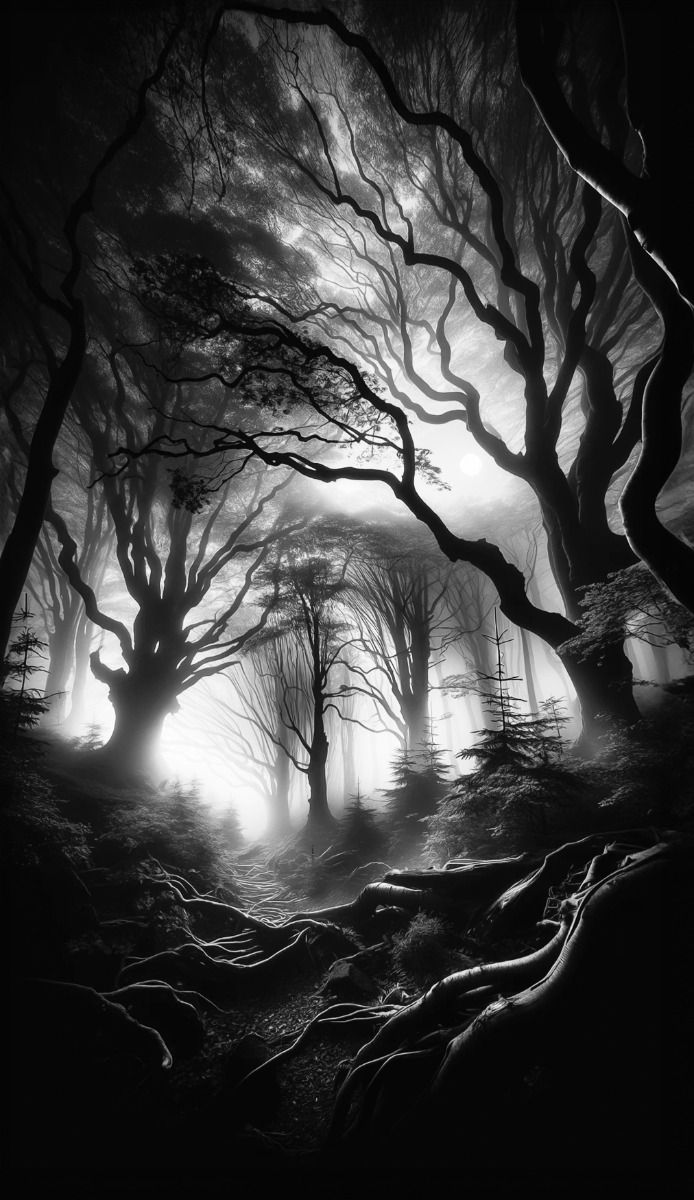
Today something deep within me has died. I may distract myself doing meaningless tasks but when I remember that Kamala lost the presidency, grief chokes my heart. I’ve been crying on and off since I woke up to face our tragic state of affairs.
Her concession speech was graceful, heartfelt, and full of hope. She has style and integrity, unlike her opponent. She called Trump to congratulate him and to let him know she will uphold a peaceful transfer of power.
I was sure Kamala was going to win. We, democrats, had more support, bigger crowds, great momentum, and a better candidate. In three months, she accomplished more than other candidates do in a year. She would have been an exceptional leader working for all the American people, but I guess, Americans are not ready for a woman president, especially a black woman.
I could say a thousand reasons why Trump is such an awful person and the worst president in American history, but I have to keep it brief. Amidst other reasons, he is a convicted felon. If you would like more information, you may check my author notes. Republicans put a dangerous man in the White House. Our Constitution and Democracy are in danger. I can’t even imagine Trump without guardrails. May God help us.
♦♦♦♦♦♦♦
the long night's veil
has set over our country,
but our bright spirits
will light the way
to a better future
| Author Notes |
"But I know, somehow, that only when it is dark enough can you see the stars. -- Martin Luther King, Jr.
Trump is a convicted rapist and criminal felon, but due to the Superior Court ruling of Presidential immunity, he will face no consequences for his crimes. Before Trump, no former U.S. president had ever been indicted or convicted. He was charged with 88 felony counts across four criminal cases, as well as implicated in a pair of civil suits that could result in huge financial hits. On May 30, he was found guilty on all counts in his New York hush money case. guide to criminal cases, PBS article criminal cases status by a Time magazine article People Magazine criminal charges explained ************************************************************************ MODIFIED HAIBUN WITH GOGYOHKA: Haibun is a Japanese poetic form that usually combines haiku with prose, but this modified haibun uses a Gogyohka instead of a haiku. Haibun is written in present or past tense. The subject matter can be variety of topics, from autographical or short sketch of a person, place, or event. The point of view is first person (the author's eyes), or third person (he/she). Use imagery, sensory, and concrete details. Length varies from a few paragraphs with one haiku or longer ones with interspersed haiku. The prose tells the story, gives information, defines the theme, creates a mood through tone, and provides a background to spotlight the haiku. The haiku moves the story forward. for more information click here GOGYOHKA is a five-line Japanese poetic form with no strict rules on syllable count but as brief as possible. Japanese poets have written gogyohka since the 1910s. However, they did not name the form until 1983 by poet Enta Kusakabe. source=wikipedia Thank you very much for reading and reviewing my poem, Gypsy Pictures from my Pinterest account. Presentation and Haibun by Gypsy Blue Rose (c) copyright 11/6/24 |
![]()
By Gypsy Blue Rose

The year I was four, had been one of the worst ones for my family. My father lost his job and he couldn’t find a new one. We were evicted from our home and we depended on the kindness of friends and family; but eventually, each one of them asked us to move out. I was a small child but I still remember how embarrassed I felt.
One night, during the holidays, my father told us we would not get Christmas presents from that day on. Christmas was officially over for my little brother, my big sister, and me. We were heartbroken but didn't lose hope. We were young enough to believe in magic and not old enough to face the cruel truth.
But we didn’t lose hope. We believed in the Three Wise Kings and thought they would come no matter what Dad said. We waited all night to see them fly across the sky riding their camels, with bags full of gifts. They didn’t come. I had never been so disappointed.
Eventually, my father found a job and we had many celebrations after that, but I will never forget the year Christmas was cancelled.
| Author Notes |
my story has 196 words, the contest calls for 100 words or more.
This is a true story for the contest. In Spain, we celebrate Christmas by attending midnight mass and partying all night on Christmas Eve. Adults don't get presents, only children do on January 6th, Jesus Christ's Epiphany day. Epiphany is the Baptism of baby Jesus and the day He received gifts from the Three Wise King. Thank you very much for reading and reviewing. Gypsy |
|
You've read it - now go back to FanStory.com to comment on each chapter and show your thanks to the author! |
![]()
| © Copyright 2015 Gypsy Blue Rose All rights reserved. Gypsy Blue Rose has granted FanStory.com, its affiliates and its syndicates non-exclusive rights to display this work. |
© 2015 FanStory.com, Inc. All Rights Reserved. Terms under which this service is provided to you. Privacy Statement